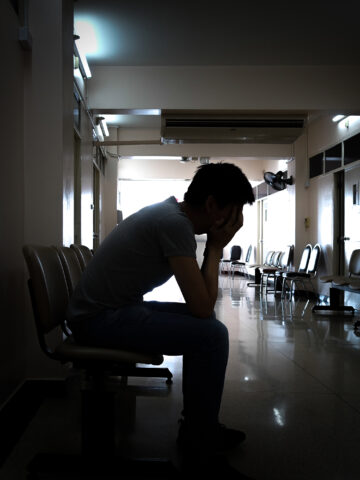Growing children, whose lungs and hearts are still developing, are at risk for greater effects of secondhand smoke (SHS). Children exposed to SHS are essentially breathing in the same harmful chemicals as smoker themselves, says Dr. John Mersch, a CHOC pediatrician. These risk factors include poor lung development, lung cancer, heart disease, cataracts and respiratory problems such as asthma, bronchitis and pneumonia.
Secondhand smoke, a combination of the tobacco smoke exhaled by a smoker and the smoke emitted from the burning end of a cigarette, cigar, or pipe, is classified as a Group A carcinogen by the Environmental Protection Agency. It contains more than 4,000 hazardous chemicals known to generate cancer and heart disease which has been proven to kill over 41,000 young nonsmoking adults and more than 400 infants on a yearly basis, according to the Centers for Disease Control and Prevention.
“Harmful SHS chemicals cause a child’s blood platelets to become sticky,” explains Dr. Mersch. “This makes it harder for the blood to flow smoothly through their blood vessels and arteries. In turn, the child’s risk of heart attacks and future heart disease is immediately increased by 25-30 percent.”
The effects of SHS on infants are even more immediate. Tobacco toxins are known to have effects on the part of the baby’s brain that regulates breathing. Babies who die from Sudden Infant Death Syndrome (SIDS), the unexplained, unexpected death of an infant in their first year of life, are found to have higher concentrations of nicotine and cotinine, (signs of SHS), in their lungs as opposed to infants who have died from other causes.
The US Surgeon General has concluded that e-cigarette vapor contains harmful and possibly harmful chemicals including nicotine.
Although it is difficult to avoid all exposure to SHS, here are some helpful tips to protect yourself and your children from these harmful chemicals:
- Never allow smoking in or near your house. Smoke lingers in the air for hours and in the smoker’s clothes. The best way to prevent exposure to these leftover chemicals is to have the smoker change clothes before interacting with children.
- Never allow smoking in your car. Even with the windows rolled down, every passenger in that car is still exposed to those harmful chemicals.
- Avoid known smoking areas as much as possible, even if there is no smoker present since harmful chemicals continuously float around in the surrounding air.
- Send your child to tobacco-free daycares and schools.
- Make every person aware of these rules before allowing them to come in contact with you child.
- For smoking parents, the best way to prevent the effects of SHS in your children is to immediately quit smoking.





